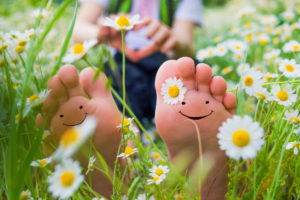Many people don’t think much about their feet -- until they hurt. Working in the laboratory on hard, typically concrete floors can be very taxing on the body. In honor of Foot Health Awareness Month, we’re here to guide you in finding foot comfort while working all day (and night!) in the laboratory.
Feeling Sore?
Tips & Tricks to Help Foot Pain
Part III
Karen DiDonato ⋅ April 28, 2021
In this last part of our foot-related series, we will provide some suggestions for accessories as well as ergonomic advice to help posture that may provide support and help ease the strain of standing and walking for many hours during your shifts.
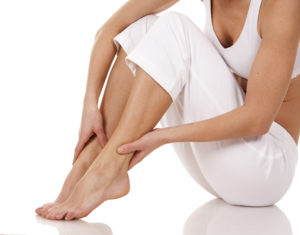
Of course we’re not doctors. We’re just providing suggestions based on experience and feedback from other healthcare professionals. We always recommend visiting a local running shoe store for a full evaluation, and if you have problems with your feet that a running store can’t help tackle, please visit your doctor or a podiatrist.
To access the first of this two-part series in honor of Foot Health Awareness Month, click here and the second part is available here.
Compression Socks

At the end of your shift, do you find you have swollen ankles, achy feet, or lower back pain? Blood pooling in the lower extremities can lead to vascular problems, which can be painful and can encourage bad posture.
Cleveland Clinic foot surgeon Georgeanne Botek says this is done “by gently squeezing the legs [which] increase[s] the pressure in the tissues beneath the skin.” She adds, “This reduces excess leakage of fluid from the capillaries, and it increases the absorption of this tissue fluid by the capillaries and lymphatic vessels.”
So not only does applying gentle pressure to your lower extremities to encourage venous return and limit leg swelling, it also helps prevent varicose veins. Varicose veins are swollen, twisted veins that lie just under the skin and usually occur on the legs. They can be painful and unsightly.
Compression socks can easily go from work to workout. They help for prolonged sitting or standing, but they also help keep muscles from getting sore after strenuous activities like running or a long day of walking or hiking.
Who shouldn’t wear compression socks? According to the Oklahoma Heart Institute, consult a medical professional if you have ischemic disease including peripheral vascular disease affecting your lower extremities, and/or diabetes.
Compression socks can be purchased online or at any running store. Easily found reputable brands include 2XU, CEP, CWX, Feetures, Ing Source, and OS1st.
As with any athletic gear, treat your compression socks gently by washing them in cold water, not using fabric softeners, and hanging them to dry.
Sleeves
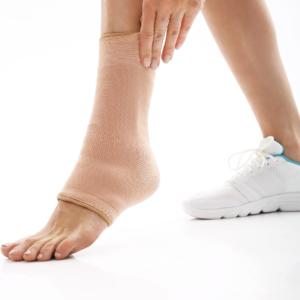
You can also consider sleeves which work like a sock by providing compression and support, but are for more specific areas like the knees, feet, or hamstrings.
Foam Rollers
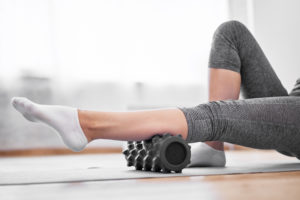
You may also consider foam rollers. Foam rolling is a form of self-myofascial release, which can be described as similar to a targeted massage. Research has found that regularly breaking up fascia (thin tissue primarily made up of collagen) through foam rolling or massage can help increase your range of motion and decrease soreness.
When used specifically on the feet, foam rollers can provide relief for plantar fasciitis, ease the pain related to arthritis, relieve pain related to neuropathy, and can improve circulation.
There are a variety of foam rollers. Some are quite small making them portable for travel, which is very handy for those of you on assignment as contractors. Here are two examples:
- The Foot Log has points on it that simulate reflexology, which the NIH defines as “a practice in which different amounts of pressure are applied to specific points on the feet or hands. These points are believed to match up with certain other parts of the body.”
- TriggerPoint MobiPoint is described as “designed to release tightness, stimulate circulation, and soothe discomfort, specifically in small areas like the hand and foot.”
Larger rollers can be used on legs, back, arms — pretty much anywhere that feels tight or sore. Typically firmer rollers are best for an intense, deep myofascial release. Rollers with protrusions are good to act as trigger points to release tension. If you aren’t sure which to buy, try them to see which is the most comfortable for you. After all, you aren’t likely to use it if you aren’t comfortable with it.
Consider these foam roller exercises to relieve pain and tension as listed on Prevention.com.
Massage Guns
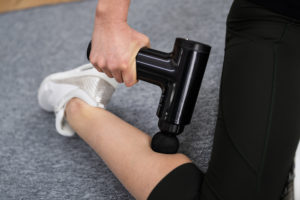
If you have extra cash to spend, consider a massage gun which uses vibration to provide rapid bursts of pressure to hyper-target the tissue of a specific problem area. They are said to increase blood flow to a specific muscle area, which can help reduce inflammation and muscle tension. The downside is that they can be quite expensive. Theragun’s PRO model starts at $599 and Hypervolt Plus starts at $399. There are other knock-off models available at much cheaper prices.
Epsom Salt Soaks

On the contrary, here’s a post-work option that is very inexpensive: epsom salt soaks. Made up of magnesium and sulfate, epsom salt costs pennies on the dollar. The magnesium is known to decrease muscle soreness and speed up healing by reducing inflammation. Easy and inexpensive, epsom salt provides potential benefits with low risk to decrease inflammation and foot pain, and soaking in a warm bath is certainly relaxing.
Epsom salts can be purchased at pharmacies, grocery stores, big box stores, and online shops.
Good Postural Habits
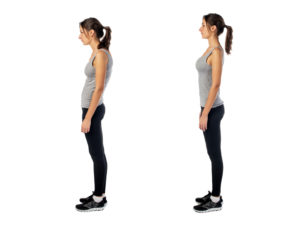
Regardless of which methods you choose to help manage your shifts, always have good postural habits while standing.
The American Chiropractic Association recommends several general ergonomic tips which can affect posture to help reduce the chance of pain and injuries while standing.
- Bear your weight primarily on the balls of your feet.
- Keep your knees slightly bent.
- Keep your feet about shoulder-width apart.
- Let your arms hang naturally down the sides of the body.
- Stand straight and tall with your shoulders pulled down and backward.
- Tuck your stomach in.
- Keep your head level. Your earlobes should be in line with your shoulders. Do not push your head forward, backward, or to the side.
- Shift your weight from your toes to your heels, or one foot to the other, if you must stand for a long time.
Practicing good posture as well as smart foot and leg health can help give you the energy and ability to get through your shift and prevent future medical issues. Try these accessories alone or together to find what works best for you. It is a small investment in your health, but your feet will thank you!
